Your child has a unique personality and discipline level, which of course you know and understand better than anyone else.
And that is the part that makes choosing a martial arts program all the more interesting for you. As a parent, you want the best for them, and knowing which style of martial art is best for them can be advantageous.
If you already have a family member who does martial arts, then it might be a bit easier for you to pick which martial arts you would like your child to learn.
But most of us don’t have a family member already training in martial arts, and that makes it tricky to choose which one is going to be best.
Sticking to a martial arts program depends on a few commitments from you as their guardian, but getting your child to stick to a program largely depends on your child feeling comfortable enough to stay in class.
If your child feels that the class is too intimidating or outside of their comfort level, they will probably ask you to stop taking them to class.
Let’s go over the most important aspects of picking the right martial class for your child and the key aspects to pay attention to when deciding which one to invest in with your family.
What are Martial arts?
Martial arts have been around for centuries, associated by most people to East Asia. A correlation with East Asia is the way that most people would come to understand its source of origin in today’s world.
However, the truth is that there are even deeper roots attached to martial arts dated all the way back to Europe in the 1500s.
Martial arts played the role of teaching ‘professional’ warriors how to be prepared for combat. Europe was one of the first to employ a systematic approach to training its highly regarded professional warriors in the skill of martial art combat.
Martial arts is of Latin origin meaning Arts of the Mars, which is the Roman god of war. Those who write books on martial arts tend to argue that the name is all too contradicting to what martial arts truly is – the act of being a professional warrior.
It has nothing to do with actual war, rather it is a fighting system in itself.
How have martial arts survived this many centuries?
Over the centuries, there have been new techniques and systems have come to the forefront of the martial arts system. This is not a bad thing, however, it is not considered the original form of martial arts.
Muay Thai and Krav are art forms that – many artists don’t even consider these to be real martial arts – as they are better known as combat systems.
The truth is that martial arts have survived this long due to a variety of reasons – depending on who you ask, they could desire to learn martial arts for a number of reasons or one reason alone. The most common reasons are as follows in the modern world.
The study of martial arts is a tradition that sometimes runs in the family
Sometimes, though not always learning martial arts is passed down in the family line. If dad or uncle, or even mom is an avid martial artist.
It’s easy for young kids to study from an early age onward. It’s not unheard of for students of martial arts to have a close family member who also studies themselves.
View in gallery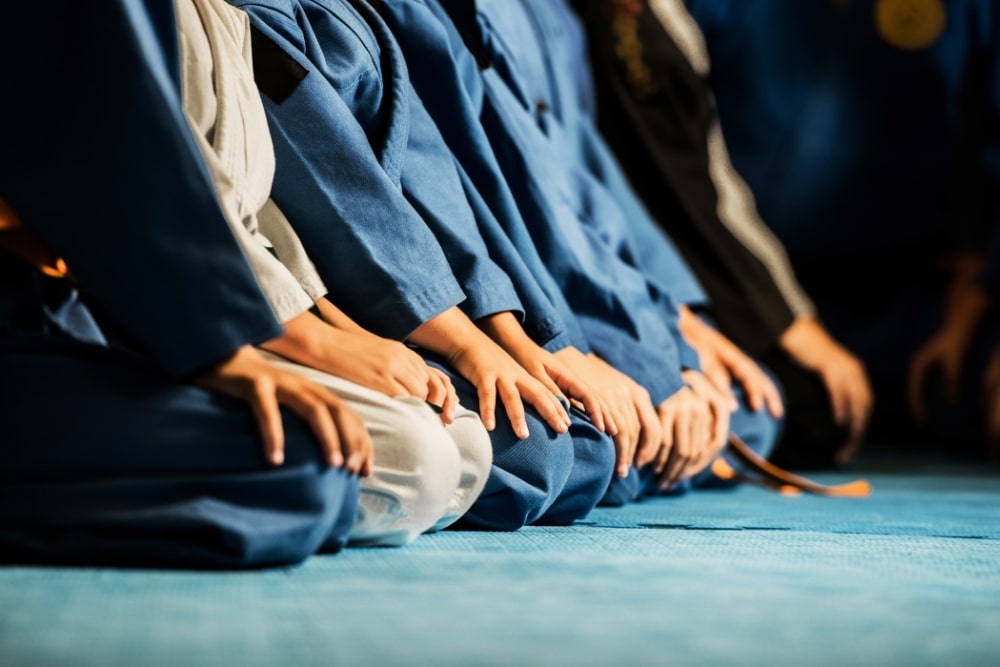
How are martial arts passed down to children in families?
In countries such as Japan, where martial arts is a highly valued concrete piece in society, kids are guided to learn martial arts at a young age. Learning martial arts becomes a natural part of their lifestyle process growing up. It helps young children grow into mindful adults.
As a teenager, they are put into a martial arts program or taught by a family member who is a master of martial arts as a part of the family tradition. In China, martial arts have a specific system that is to be followed by students.
The two main systems are termed under the umbrella names of either Southern or Northern martial art styles. Within these two categories, there are various different methodologies and focuses placed upon the student.
Most martial art styles focus on qi (pronounced as “chi”) – the internal flow or life force energy of a human being.
Though, outside of focusing on qi traditional Chinese martial arts can include; certain philosophies, meditations, stances, or have a sole focus on competition.
The styles and systems of martial arts are a part of Chinese tradition and have been around for centuries. Reading the book “The Way of The Peaceful Warrior” gave me an in-depth view of martial arts training as a tradition.
If you’re looking to have your child read something beneficial to introduce him to the world of martial arts, offer this book for them to read.
What aspects of life do martial arts help children with?
Martial arts is something that adults, children, and families have benefited from for centuries. Yet, every individual can give you a different set of personal reasons that brought them to learn martial arts.
Outside of these very personal and deeply important reasons for practicing martial arts – are a few sort of ‘standard’ reasons that one can put their child in a martial arts class.
It’s common for martial art studios in the United States to advertise the following practices as another reason on the list to go forward and come to their studio with their kid. These reasons are a no-brainer so-to-speak when choosing a martial arts class for your child.
Building discipline and confidence in your child
View in gallery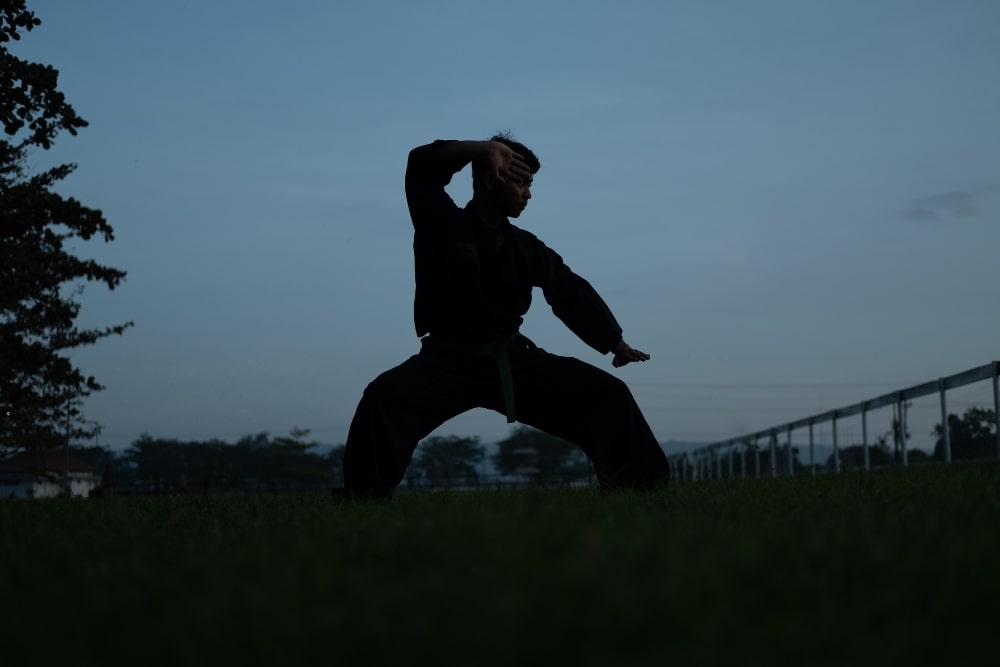
Confidence is something that is internalized throughout a child’s time growing up, it can’t be bought, it is rather taught. Self-confidence is the act and feeling of believing in your own skills and abilities.
Whether that is how you present yourself or the way you maneuver as a unique individual, confidence is what backs up that which you believe in. Parents often put their child/ren into martial arts to instill self-confidence in them.
This is especially true for kids who are shy and uncomfortable being around unfamiliar people or settings.
A martial arts class is the perfect place for them to practice feeling strong in turn gaining a sense of confidence that spills outward in other areas of their life.
You don’t have to be a certain age to benefit from building up more confidence, some toddlers can even feel the benefits of improved confidence.
In essence, confidence is the attitude that one has toward their own skills and abilities. Hence, the life of a toddler is heavily reinforced by uplifting their self-confidence.
It’s been clear that the martial arts community raises confident toddlers upward well into the teenage years, by reinforcing one’s own ability and skill set in a positive manner. Having reinforcement from instructors in class greatly helps build kids’ confidence.
When a child performs martial arts it encourages them to be proud of the moves and decisions they have made. The entire foundation is teaching young children to make moves and 100% back them up with pure intent.
Successfully executing these moves improves a child’s ability to reflect positively on the way they make decisions.
A child will learn discipline in addition to confidence when enrolling in a martial arts program. This means that the instructor will reinforce the proper moves if they do them incorrectly – in a gentle and helpful manner of course.
As this plays out over time children are keen to drop an ‘I can’t’ attitude and replace it with an “I can” attitude that builds discipline in the long run.
Focus, attention, and direction following
If you’ve ever been to a class yourself then you understand that listening to your teacher’s instructions takes focus, attention, and direction following. This is because you cannot learn new things from an instructor with these key components.
In a martial arts class, the instructor will first show and tell the children how to perform a certain move, and then ask them to copy them with a partner or alone.
This process encourages kids to pay attention, they will learn how important it is to pay attention to your teacher or you will surely get left behind.
The attention span of a child is something that has to be constantly stimulated or else it can become really short. Martial arts lessons demand that children use their brains by paying attention even when they want to be thinking about other things.
Martial arts asks children to be present in the class by giving their full attention to the instructor!
View in gallery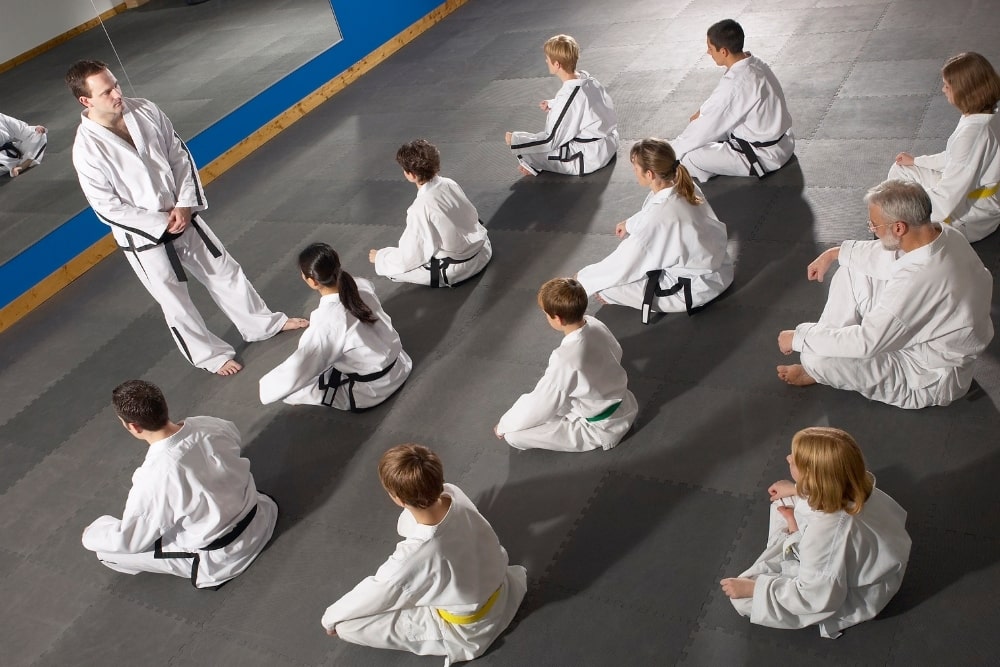
It’s obvious who is or isn’t paying attention in a martial arts class, this is because the instructors cap the classes at a certain number of children that they know they can give their optimal attention to.
They don’t overfill the class of students so that some kids can get away with goofing off in the back and not paying attention. They teach students the importance of paying attention, and that they will get what they put into the class.
Direction following in martial arts is a bonus that kids learn along with the act of paying attention and the ability to focus for longer periods of time. Directions are usually given to the class, as they are expected to follow them to learn the techniques of the martial art style.
Martial arts is not something that ‘comes naturally’ though your child can pick up on it more easily than not, every kid must be able to follow directions appropriately to learn the moves and stances in martial arts.
The various levels of the martial arts studios make it possible for children to start off small and go big!
You don’t have to avoid enrolling your kid in martial arts just because you understand they need work on being able to successfully follow directions, learning this skill is a matter of working their way up to better direction following.
Enroll your child in the appropriate level of class like a beginner’s class if this is their first time having to follow an instructor’s directions.
Greater awareness of the body
A child understanding how their body physically works moves about and feels is monumentally important for their understanding of themselves well into adulthood. Thus, when a child is placed in martial arts – they are asked to sense their body.
In order to execute the moves and positions, they need to have an idea of how close they are to their opponent, how much force it takes to master the position, and have a sense of when they become tired and need to rest.
Kids being able to discover these things about their own bodies is all a part of the martial arts system. Many martial arts programs have the kids stretch and do breathing techniques before class starts in order to help them gain a sense of their body that day.
Making friends and using a team effort
View in gallery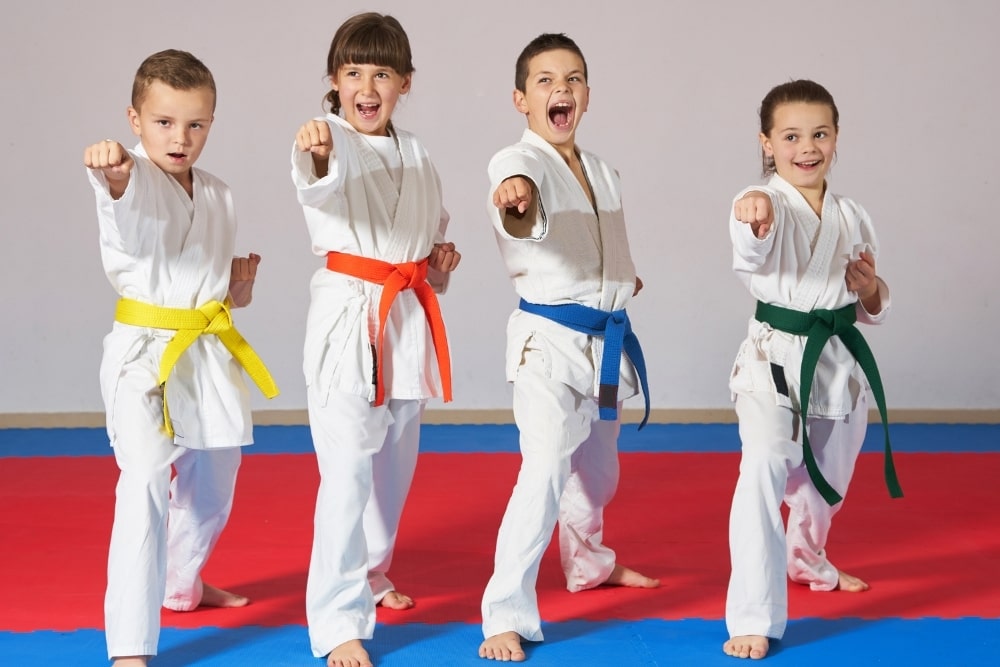
Friends come easily when you’re a child, it seems effortless to them to make friends. Yet, friendships with children who have similar interests and morals as your child is probably a little more difficult to come by.
That’s the point of martial art lessons – to bring a community of like-minded children together. Classes offer a stepping stone into a world of other young children learning the same skills as their classmates.
Kids in martial arts tend to be deeply impacted by the other friends who join them in class, oftentimes these friendships can last into the teenage years to come.
When your child has a friend who is also working on the same strategy and discipline techniques as they are, they can evolve together while working on constructive activities together.
Self-defense and teaches skills to stay safe in potentially harmful situations
Kids can always benefit from a self-defense lesson, and that’s what martial arts first and primary role is for your child. It’s teaching them that they are in control of the fight and taking that into the real world.
I would say that some forms of martial arts implement real-world fighting techniques more efficiently than other forms – but all forms of martial art classes can be an introduction to the tools of self-defense.
At the least, more gentle forms of martial art can help your child gain interest in the power their body beholds – that understanding can be broadened to the knowledge later on more geared toward effective self-defense techniques.
Jiu-jitsu is probably one of the best martial art styles where children can truly transfer the lessons they learned in class to real life.
Mindfulness and meditation
Martial arts is sort of like a moving meditation, when kids learn martial arts early on – they tend to feel calmer and more present. Martial arts is beneficial for the mind by nature, it is meant to uplift and bring inward children’s awareness.
When martial art is a part of a child’s life, they will listen better and think before making decisions in life too. Regardless of the style of martial art, you place your little one in, they will benefit from the mindful and meditative approach that it brings to their life.
Over time your child will master different techniques of meditation through using their breath with the positions and movements. Patience is another great tool that martial art instructors practice with their students, patience is something that every child can use more of.
These mindfulness skills are something that parents love knowing are a part of their little one’s life, they are skills that can stick with them for a lifetime.
Oftentimes when kids grow up practicing martial arts, even if they lose interest in it at some point in time, they always come back around to some form of mindful activity once they’re an adult again – whether it be meditation, yoga, or martial arts training as an adult.
The 7 top martial art styles available to kids
Brazilian Jiu-Jitsu is a form of protective combat martial art
View in gallery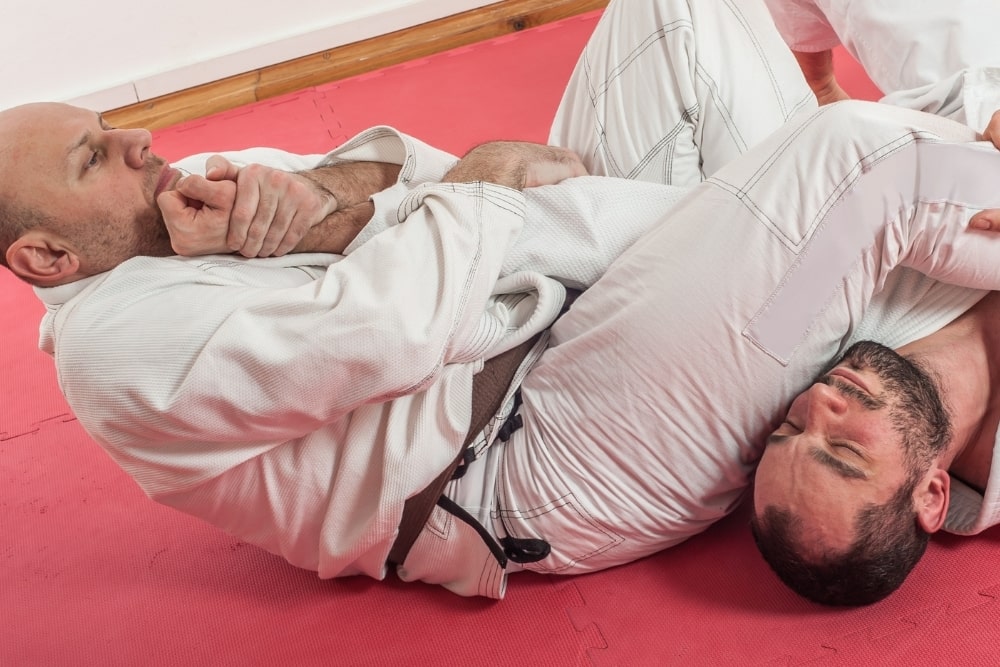
If you believe that your child needs to understand how to truly protect themselves in the real world then Brazilian Jiu Jits otherwise known as BJJ might be the right martial art for your family.
BJJ implements a program of drills, positions, and movements that teaches children to protect themselves in the real world, in the real world a street fight can end very badly for the losing victim.
Although, when a jiu-jitsu practitioner is targeted or ends up in a street fight, they generally know how to take their opponent to the ground which gives them the ultimate advantage.
Your child doesn’t have to be prone to street fights at all to benefit from the knowledge of self-defense techniques.
Any kid regardless of their age can protect themselves from an unfortunate, yet possible, attack from another person. These things can even happen in life as an adult, it’s important to know how to protect oneself even at a young age.
With bullying becoming more prominent than ever before, children can benefit from the life-saving skill of jiu-jitsu.
BJJ uses the belt system that was originally conceived in 1882. By incorporating 5 different color belts that indicate the level a kid is at as they work their way through the system.
Each belt color has 5 different “stripes” to gain based on the way someone advances forward in their training.
Karate is a worldwide combat system that is more for on the mats
View in gallery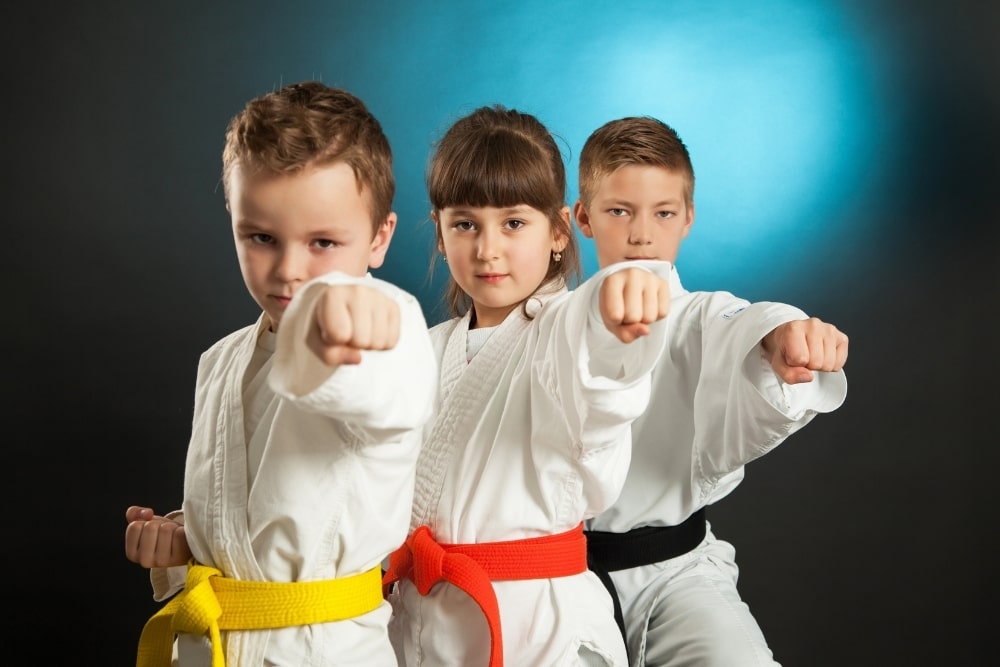
Karate was originally conceived when all weapons were banned in Okinawa, it was formed as a weaponless self-defense practice. It can be taught to children in the form of useful self-defense.
Karate mainly focuses on teaching that the self is the enemy in most situations. That it is important to evaluate what you are doing in a situation so that you do not make a mistake and lose the battle.
The martial art, karate, focuses on whole-body movements and striking done with many tools such as;
- Blocks
- Strikes
- Punches
- Evasions
- Kicks
Karate is one of the most popular martial arts for children to learn, therefore there are many studios in everyone’s state for their child to attend if desired. The studios are generally helpful and warm welcoming to newcomers.
The karate system is built on 2 belts – white belt and black belt – to progress into being a black belt children will master 3 elements that every lesson in karate revolves around.
The basics are Kihon, form which is Kata, and lastly sparring which is referred to as Kumite.
Tae Kwon Do or Taekwondo is complementary to the livelihood of your child
View in gallery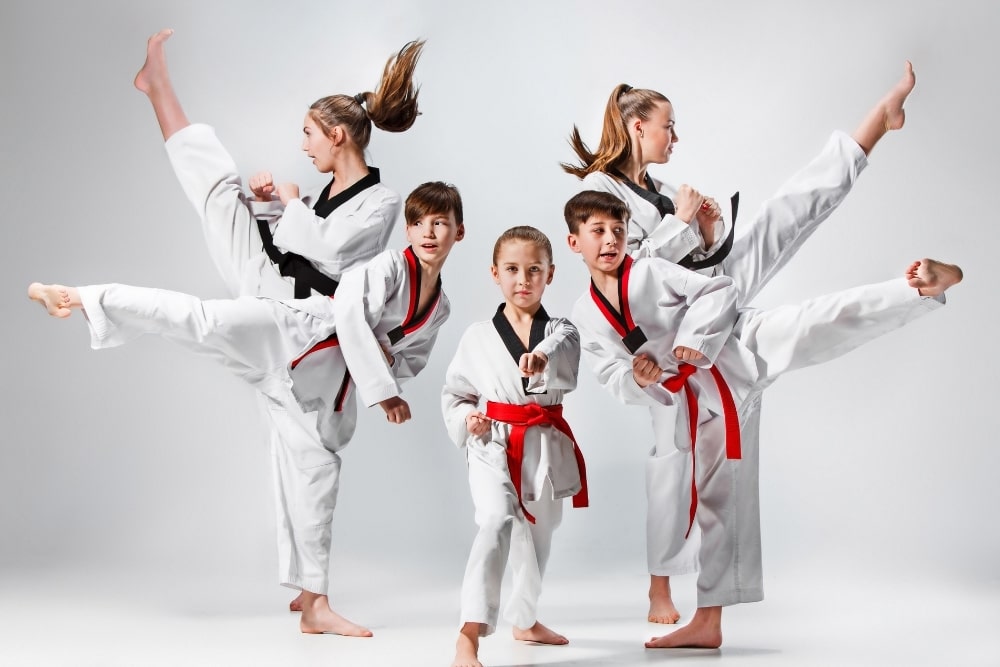
The body is one single unit, and one must behave as so – patience and discipline – this is what taekwondo teaches its students. This form of martial arts is designed to enhance life and the way that one maneuvers through this world, by becoming one with their body.
Restless children can often benefit from Taekwondo, purely because it focuses on discovering our own source of energy and directing it to a beneficial place.
Tai Kwon Do may be the most popular martial arts on our list for children from toddler-aged upward – 3-year-olds can excel in learning this martial art.
The legs are a major focus in the Taekwondo system, and there will be some block work training, as well as; strikes, takedowns, joint locks, and punches.
It can bring a well-rounded sense of wellness to your child’s life, you will surely see your child gain maturity and a sense of calmness when they engage in Taekwondo class.
Wrestling is one of the oldest forms of martial arts
View in gallery
Ah, wrestling, the age-old classic form of martial arts. This truly may be the oldest form of martial art, dating all the way back to something the Egyptians used to play and learn their bodies more deeply.
Wrestling is still thriving in the modern world, it focuses on grappling and tons of groundwork.
If you want your child to do jiu-jitsu later on or in addition to wrestling, these two complements one another very well because they are both mostly focused on groundwork.
Wrestling is one of the most intense cardio-driven forms of martial arts, children who perform wrestling have a solid core that is ignited with strength.
It will teach endurance, takedowns, pinning the opponent, throws, as well as joint locks.
Some parents who have their child competitively engage in wrestling from the young age of 4-5 years old find that their child is burnt out by the time they reach the age 12-years-old and will want to quit wrestling all together when this happens.
Try to avoid competing at a young age. This will help your child develop a passion for wrestling so they can compete later on.
Muay Thai turns the body into a weapon and is considered a Thai version of boxing
View in gallery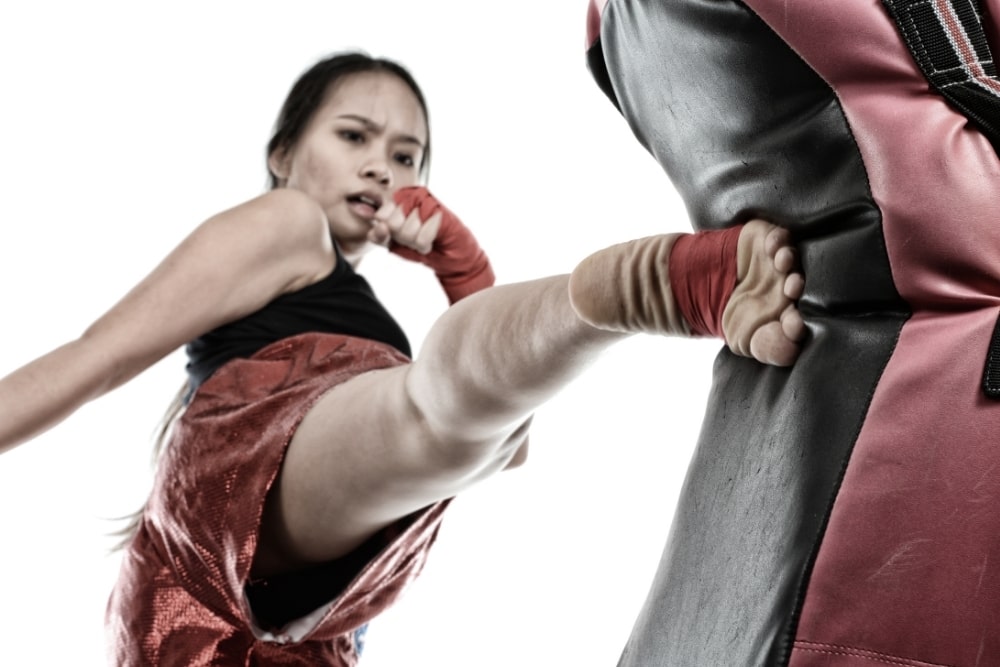
Muay Thai is the Thai version of boxing – it teaches many standing positions and footwork is a core component in its groundwork.
If you are looking to enroll your child in a gentle form of martial arts, Muay Thai may not be the best option for you. Many parents consider it to be the more violent form of martial art.
That said, Muay Thai instructors are very serious and strict about teaching children they are never to use their learned skills – which is truly a weapon – outside of the classroom unless they are in a truly dire position that they need to defend their life.
This makes it one of the most advanced forms of self-defense that can be learned in martial arts, as it turns the entire body into a weapon. The drills taught in Muay Thai are sometimes referred to as using ‘the art of the eight limbs’ which translates into 8 focal points of protection for the body.
The 8 points or weapons are; the shins and forearms(the armor), the elbows(hammers), the legs and knees (an ax), and the hands(a sword).
One of the easiest forms of martial arts to learn in Muay Thai is it trains students to understand effective striking techniques that result in a few complicated drills to memorize and understand.
Even though, there are some grappling positions that a child will learn in Muay Thai lessons.
Aikido is a form of martial art mostly focused on wrist control
View in gallery
One of the gentler forms of martial arts, Aikido is more-so focused on wrist locks and control of the arm position.
It is designed to control opponents who are not skilled in other forms of martial arts, and could be effective in unskilled street combat – though, would prove to be ineffective if the opponent has any skill in another form of martial art.
Aikido is a great tool to inhibit following directions, learning from an instructor, and making friends. If you’re looking to get your child moving on the mat, and warming up to a gentle class environment you may very well want to enroll them in aikido.
Kids who take aikido lessons should probably enroll in another form of martial arts that focuses more on effective self-defense. That way they can combine their aikido skills along with another form of martial arts to ensure they can define themselves in the real world if ever needed.
Judo can turn your little one into a future Olympian
View in gallery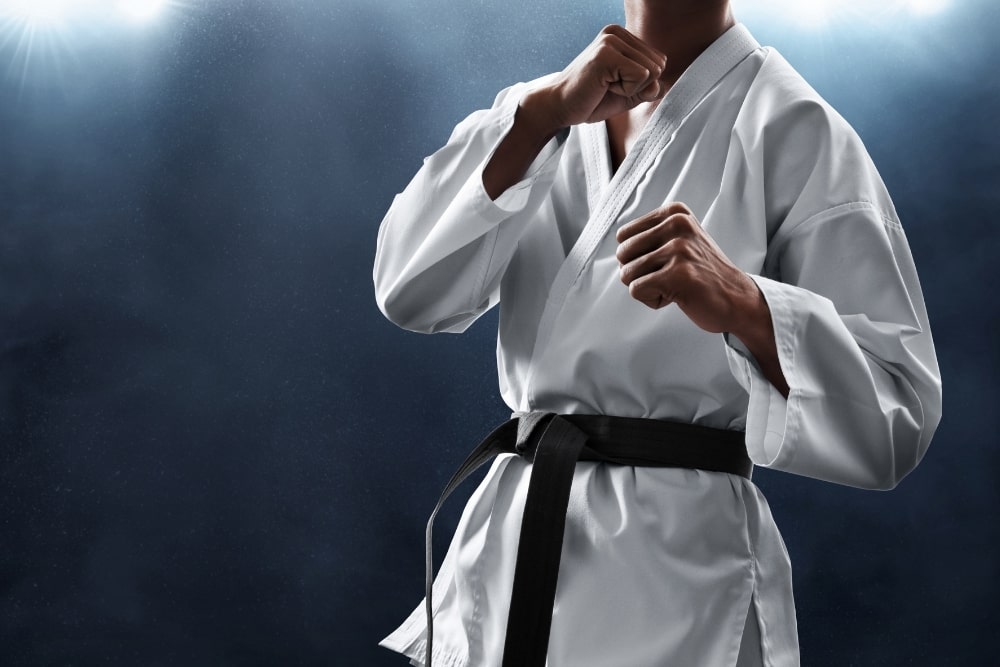
If you can envision your child one day reaching the Olympic level as a martial artist, and would like to give them that opportunity – Judo may be right for your family.
Judo is a way of life in reality, and it is included in the Olympics. In addition to being a way of life, it can be utilized as a self-defense tool in the real world.
Judo teaches you that respect and honor are the most important traits to have in your character throughout life, to truly embody the mind of a martial artist.
Judo is gentle enough to be for any child. Yet, it still gives enough of a challenge to practitioners looking to go through a challenge with martial arts.
Physically judo is tough enough to enhance your child’s physical strength, stamina, and endurance while remaining gentle enough to be called ‘ the way of gentleness’ – judo will teach your child how to be mindful.
There are no weapons involved in judo, it is all about submissions, pins, grappling, being able to fall, and control holds. Classes for Judo do not involve weapons of any kind or striking for that matter.
Judo is essentially the skill of living gently and in tune with yourself, invoking self-love, confidence, and commitment in young children.
Judo is something that toddlers can start and continue upward into the adult years, when a child turns 14-years-old they can usually transfer into an adult class(if their skills are appropriate).
Judo can grow right along with your child, and there is plenty of room for advancement into the career-building world of Judo – your child has the opportunity to go to the Olympics or become an instructor or just stick with being a passionate student of judo.
How to choose a specific studio for your child to practice martial arts
Picking which martial arts to enroll your child in is tough, there seem to be so many styles and studios that offer martial arts to children – so how do you choose which one is best for your son or daughter?
Because there are so many different styles and types, you may find it difficult to believe that one will be best for your kid over another and end up hesitating to pick any at all.
It’s better to have your child try one, and find out that it isn’t the best one for them – than to never try any out at all.
We are hoping to avoid you feeling stuck in this aspect by offering information here that can help you sort out which martial arts style can work for your child long-term.
View in gallery
Pick a studio based on a location near you that way you won’t feel overwhelmed every week commuting there
Driving an hour away from your home just isn’t ideal when it comes to your kid’s martial arts practice. Evaluate your means to drive the distance and go from there.
Do you have a car or will you be taking the bus? What is your budget in terms of gas? How much time in the week do you have to drive and the martial art class combined?
Be sure to give time for changing clothes prior to class, and chatting with friends after class for a bit. You might prefer to pay a little more for a studio closer to you rather than spend time in traffic to save money.
Interview the studio instructor before you sign the paperwork
It’s always best to have a mini-interview with the instructor of the children’s class, no parent wants to sign their child up for a new sports class to find out that the instructor doesn’t seem to click with their kid or them.
Martial art classes are up-close and personal in a lot of ways, the instructor may ask kids to volunteer for the drills and your child may be that volunteer. You absolutely need to ensure that the instructor is safe and has good reports from other parents in the community too.
Reading up on the reviews of the martial art gym you’re looking to go to is key to finding out what goes on in the gym.
You can’t see everything from a review or from the outside, so a sure way of making sure everything fits the description is to have a sit-down interview with the instructor and read reviews.
You don’t have to feel rushed to do this, if the instructor is unavailable for a few weeks, then wait it out before signing up. Though, most martial art instructors should be happy to meet with parents to answer any questions they have about their child attending their school.
Budget appropriately for martial art classes each month
View in gallery
Everything comes at a price, martial art being on the more expensive side in regards to kids’ sports classes. That said, it is well worth the price you will invest in terms of beneficial life-long lessons your kid can take with them for years to come.
In my region(Oregon), any kid martial art class is going to run you anywhere from $90.00 at the low end – which usually offers 1 class a week for 1 month.
Some facilities that have a state of the art branding and are considered world-class teaching facilities can run upward of $150.00 a month for their youth package.
Martial arts is not the least expensive kids sport to invest in, but I can see why parents are willing to make that stretch and enroll their child if they have the means to do.
The cost is well worth the benefit in your child’s environment and skill-building.
Ask any avid martial art parents out there why they do it they will tell you that there is an unquestionable benefit to having your child in martial arts – multiple benefits at that. Be sure to check the price of a studio before you sign up.
Is it okay to make my child enroll in martial arts when they don’t want to?
Many parents are left wondering if it’s alright to make their kid do martial arts when they are clearly saying they don’t want to, this is surely a tricky situation.
You understand the benefits of martial arts even though your child doesn’t. So what is a parent left to do after their kid clearly says that they just don’t want to?
Try to present the situation of attending a martial art class to your child in a way that excites them
Persuading someone, especially a child that martial arts will be good for them, is all about how you present it. Take the aspect of the class that you know suits your child’s interest the most and use it to the advantage of convincing them to go to a martial art class.
Depending on the age of your child, will greatly determine how you talk with them about attending the class, but if your child is a bit older and can understand more where you’re coming from.
You can say things like “you know you can make a lot of friends in a martial art class” or if they like to dress up, you can present the aspects of getting to wear the costumes which are the cool gifts they get by going to class.
View in gallery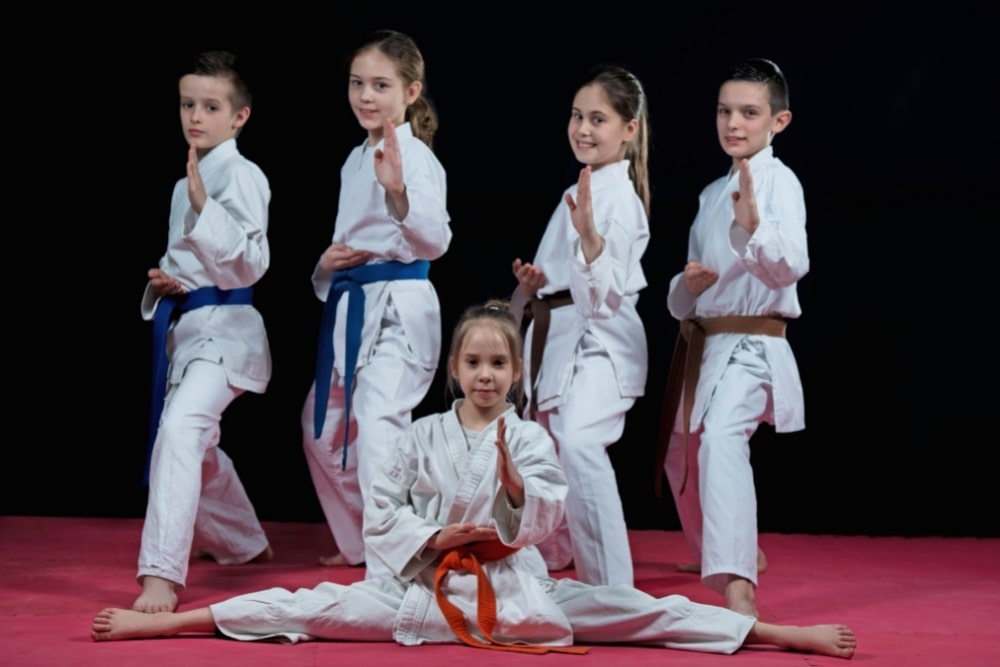
If your child likes to work toward goals, then mention the belt system and that they can show off their stripes once they earn them by meeting their goals in class.
Talk with your child about the parts of the class that make them nervous and try to minimize their angst
Children have fears and anxieties exactly the way we adults do, except they might not understand that they can’t just run from what makes them feel that way.
Getting through life is about embracing the uncomfortable in a positive way. Let them know that things that are initially hard, get easier over time and can turn out to be really good thing’s for them.
Help them work through those feelings by looking at the situation from a different angle, and gaining a new perspective.
Don’t get upset or angry with your child for not wanting to do a martial arts class. That will only cause more tension around the conversation(which they might stop having with you).
Try to gently guide them to leaning toward the edge of the nest and spreading their wingspan so-to-speak.
Give it time, you’ll get there together and practice at home in the meantime
Don’t feel rushed to get your kid into a martial art class if they don’t seem ready – remember that adults love to learn martial arts too. That’s another very neat aspect about martial art programs, there are older adults that can master the program so it truly is an all-age inclusive sport.
Start at home by learning a few martial art moves or drills yourself, then teach them to your child in the living room. You can even get a tumbling mat to resemble a martial art class, this might be what they need to gain a little more confidence toward attending a class.
Learning moves at home is something many parents love to do when they first start learning martial arts, it also gives your child a sense of how involved you are with them. You’re in it together!
They will know that they have dad or mom’s support when it comes to learning martial arts and that may also help them feel more willing to go to class with other kids and their parents.
Let’s hear from another parent on Quora who felt stumped that their kid didn’t want to attend a martial art class
A parent on Quora asked other parents the following question:
“Is it okay to force my kid to do martial arts”
Another parent who has more than 10 years in the martial art community, Kade Onines response is:
“I think any physically capable child should be forced to do one physical extracurricular activity. That could be soccer, that could be running, that could be swimming, and that could be martial arts. I think you should explain to the child that they are going to have to do at least one physical extracurricular activity, and then let them choose. If they think that Christiano Ronald looks crazy cool, and they want to do soccer, let them do it. If they really like to swim, and would like to do it competitively, let them do it. If they think that punching and kicking, or maybe grappling and wrestling, is crazy amazing(which it is), let them go for it. I don’t think they should necessarily be forced to do martial arts specifically, but it is definitely okay to force them to do some sort of physical activity.”
In Conclusion
View in gallery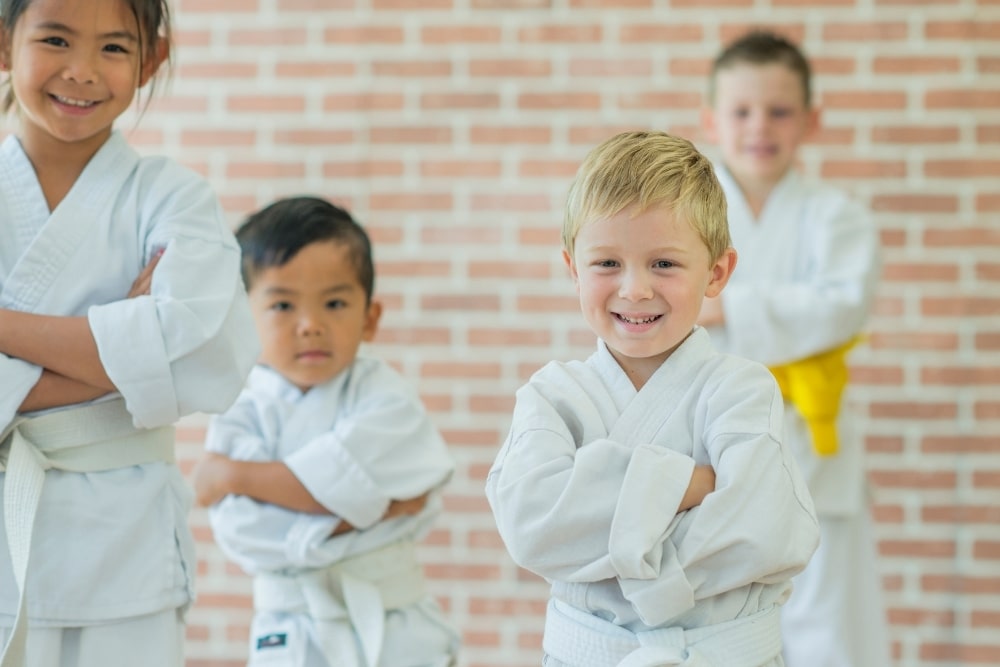
Signing your child up for a new martial art class comes along with plenty of important aspects to consider beforehand. You want the best for your child and their age, skill, and level of physical capability.
We hope to minimize the confusion behind the various martial art forms and give you the information you need to make a well-informed decision regarding a sport your family will hopefully be invested in for many years.
Keep in mind that if your child does not like or enjoy the first form of martial art that you sign up up for, you can always switch to a more desirable martial art that they like a lot better.
Talk with your child, even if they are quite young about which form of martial art they would like to participate in, don’t just make the decision for them.
It’s best to include your child in all of the decision-making that comes along with bringing your kid to a new sports class.
Martial arts can enhance any type of child’s life; shy, outgoing. one who is new to sports, young or old, and those kids who have a family history of martial artists in their lives.
Sources
6 Best Martial Arts For Kids To Learn & Why They’re Great
5 Keys for a Successful Jiu-Jitsu Program for Children






